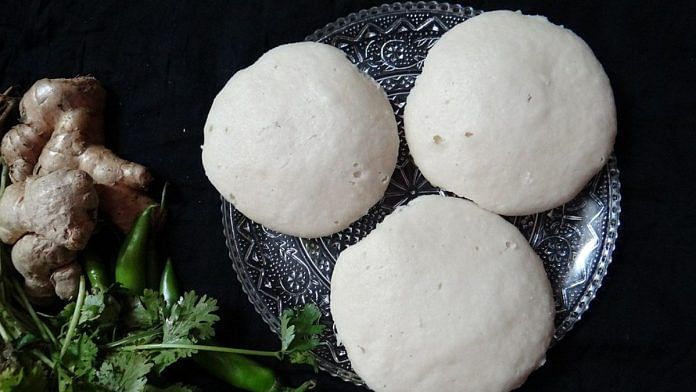For a country, whose citizens revel in the clash and clamour of colour, noise and spices, the national obsession with idli is puzzling. Those pillowy white cushions of rice and black lentils pounded and fermented to the inch of their lives are all sound and fury—that taste of nothing.
There, I’ve said it. Now, unleash the outrage.
But idlis are only as good as their accompaniments. They are false generals standing on the shoulders of their soldiers–fiery red podi, soothing coconut chutney, green coriander chutney, onion and tomato chutney. They swim unabashedly in a pool of sambar and take all the credit.
Breakfast on the go
Idlis are supposedly one of India’s more popular breakfast items. They were the most ordered item in Bengaluru, followed by Mumbai, Chennai, Pune and Hyderabad, according to a 2019 Uber Eats survey. Demand spiked in the morning between 7.30 am and 11.30 am.
It’s a bleak day when idlis are on the breakfast menu. Not when India has far better breakfast options. Hot aloo parathas with pickle and curd; a mess of egg bhurji or an omelette loaded with tomatoes, onions and green chilis; crusty bun pav with butter; dhoklas from Gujarat, a crisp dosa with a doughy centre to mop up the sambar; a bowl of freshly made aloo poha with peanuts, onion, a dash of lime and sprinkling of coriander; idiyappam or string hoppers with sweetened coconut milk or kadla (black chick peaks) curry; or my favourite appam with stew. And if you’re in a hurry, a fat batata vada, chased down with a cup of cutting chai.
Idlis like North India’s chapatis are a mere vehicle, but have been elevated to something grander. India has a 5,000-year-old history—and we can do better than idlis.
This travesty has spread to other countries as well. San Francisco, London and New Jersey are “top idli ordering cities”, according to the same Uber Eats report.
It gets worse. During the early pandemic, Indians turned to idlis for comfort. The company, iD Fresh Food, claimed it sold 35 crore idlis in 2020, and had to ramp up production of idli batter to keep up with demand the following year.
Perhaps families, trapped with each other during the many lockdowns, wanted a reminder of an insipid, boring life. Indians took to making idlis the way Americans discovered the joy of baking bread at home.
There is one idli that avoids the ignominy of insipidity. The rava idli from Karnataka. The story goes that when there was a shortage of rice during WWII—and Indians were doomed to a life without idli—Mavalli Tiffin Rooms (MTR) steamed semolina. The rava idli with a bit of ghee can stand on its own but is elevated with saagu, a potato masala condiment, and chutney. But it’s more of ersatz idli, and it does not count.
For a dish so insipid, the idli has this remarkable ability to not just survive, but thrive despite World War II and famines.
Also read: Why the humble halwai must return to our Diwali hamper this season
Healthy, vegetarian and undefeated
In the ‘The rise and rise of the idli’ for the Economic Times, Vikram Doctor describes how there was an attempt to stop people from eating idlis during the famines of the 1960s. With rice becoming a scarce commodity, wheat was shoved down the throat of South India.
It seems that Lal Bahadur Shastri, who was the prime minister of India at the time and loved idlis, made the ultimate sacrifice and gave them up. By 1967, hotels and restaurants in Mumbai (then Bombay) announced that they would not serve anything made with rice, including idlis, five days in a week, writes Doctor.
Unfortunately, the idli remains undefeated and even has its own day. World Idli Day is on 30 March.
Today, it has the power to unite two men who are diametrically opposite in ideology and demeanour: Prime Minister Narendra Modi and Member of Parliament Shashi Tharoor.
In 2020, ‘Modi idli’ took on ‘Amma Idli’ in Tamil Nadu. Posters promising four idlis for Rs. 10 made with modern kitchen equipment, tasty and healthy, were plastered across Salem. And when a British professor said he found idlis boring, Tharoor responded with a blistering riposte on Twitter. “Yes, my son, there are some who are truly challenged in this world.”
Perhaps in an India so divided and so quick to take offence, the idli is a balm. It is vegetarian, relatively healthy (unless fried) and above all, inoffensive.



